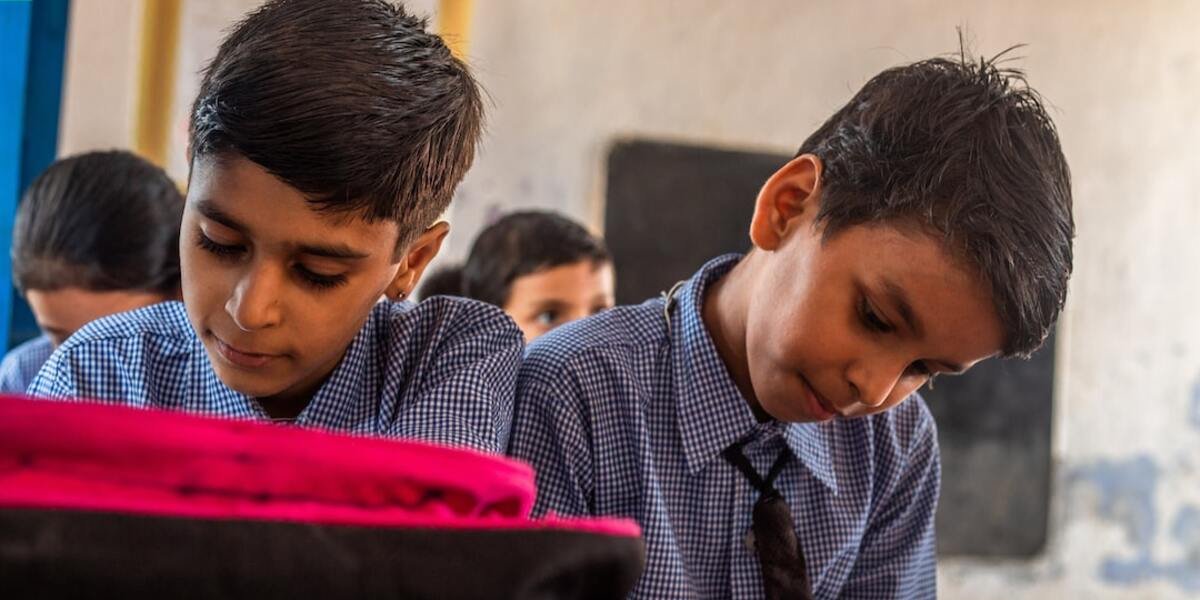Public Preschool: A Comprehensive Overview for Parents and Educators
Understanding the structure, benefits and shortcomings of public preschool is essential for both parents and educators. As an initial step in a child’s formal education journey, public preschool sets the foundation by exposing children to structured learning at an early stage. It plays a significant role in shaping their perspective towards schooling and learning as they grow.
The essence of this blog post will be providing a comprehensive overview about what exactly entails enrolling your child into a public preschool system – that goes beyond just being affordable or widely available. We’ll address common misconceptions, emphasize its impact on overall childhood development along with giving valuable insights from well-established educational practitioners around things to consider before deciding upon “public vs private” schools for young learners.
Did you know?
Did you know that according to the National Institute for Early Education Research, children who attend public preschool programs are less likely to be placed in special education classes later on? Fascinating!
The Role of Public Preschool in Childhood Development
Public preschool plays a pivotal role in childhood development, particularly as we delve deeper into the year 2023. With education now heavily intertwined with technology, it is essential for public preschools to adapt and evolve accordingly. This evolution not only enhances the learning experience but also equips young minds with necessary skills to thrive in an increasingly digital world.
For instance, teaching methods in public preschools have considerably shifted from traditional textbook-based approaches towards more interactive ones involving computers, tablets or smart boards. These technological tools offer numerous possibilities for youngsters to explore their natural curiosity while simultaneously instilling basic tech literacy from an early age.
Additionally, integrating technology within classroom settings transforms abstract concepts into tangible reality thus making learning active rather than passive. In doing so, children are able to grasp complex ideas effortlessly leading them on a path of continuous exploration and discovery – key aspects critical for cognitive growth during these formative years.
However important it may be though; successful integration relies significantly upon thoughtful implementation paying careful attention specifically toward aligning educational objectives with available resources at hand such that neither overshadows the other nor compromises overall quality of education delivered by our respected public pre-school institutions across this digital landscape we collectively navigate through today.
Key Components of a Quality Public Preschool Program
In the sphere of early childhood education, public preschools hold an eminent place. They are a foundational step towards setting up children on the path to success in their academic journey and beyond.
One critical aspect that sets these schools apart is their accessibility to all demographic sectors regardless of economic strata or location. However, for public preschools to be truly effective at fostering growth and development, they must offer quality programs. Let’s dig into some substantial components that define such offerings.
1) **Child-Centric Curriculum**: A good public preschool program first recognizes children as active learners who learn best through exploration and play. The curriculum should hence provide ample opportunities for practical learning while balancing it with structured activities tailored around themes interesting appropriate for pre-schoolers.
4)**Technology Integration:** In tune modern age needs (2023), integration technology primary component any efficient educational system including Public Preschools . Use meaningful interactive tools like digital storyboards touch-based games supplement enhance traditional classroom teachings has proven beneficial nurturing tech-savvy generation .
Assessing the Impact of Public Education on Young Learners
Public preschool has a profound impact on the educational trajectories of young learners. In today’s digitized world, technology integration in public preschools is proving to be an influential factor contributing to early childhood education.
Research shows that children who attend public pre-school have better reading skills and cognitive abilities due to their exposure from this tender age. This foundation plays an essential role as they progress through higher grades, ensuring improved school readiness compared with children without access to such programs.
At the intersection of learning and play lies interactive technology use in modern classrooms. Early experiences with innovative tech devices help foster creativity, critical thinking, problem-solving capabilities amongst pupils at a pace convenient for every individual learner.
Moreover, since we live in 2023 – referred colloquially as ‘the digital era’, teaching toddlers about proper gadget usage can instill responsible conduct towards these tools later on life- valuable lesson indeed!
Exploring Curriculum Standards for Public Preschools
The curriculum standards for public preschools have evolved with the strides in technological developments. As society becomes more digitally inclined, it is imperative that our educational systems adapt to keep children engaged and learning effectively. The incorporation of technology into early childhood education, specifically within public preschools, has seen a significant shift towards an interactive learning environment.
Being technologically literate at such a young age offers an opportunity for children to explore new avenues of knowledge while developing cognitive skills crucial for future success. A major aspect lies in deciphering how best these tools can be employed within the framework of existing curriculum standards to maximize benefits and minimize drawbacks.
It’s pertinent now more than ever before as we wade deeper into 2023; educators must take note by integrating digital resources such as tablets or smartboards right from early childhood stages so youngsters stay attune with modern advancements without forsaking core pedagogical principles essential during the pivotal phase of their intellectual growth.
Embracing technology fosters creativity among learners besides promoting collaborative play which forms key foundation blocks in social development studies suggest. Therefore, revisiting and refining current curriculums wrapped around digitization cannot be overstated enough intending holistic child development having far-reaching impacts on their academic journey henceforth.
How Literacy and Numeracy are Fostered in Early Learning
In today’s public preschool systems, literacy and numeracy have been given prime importance in the roster of early learning. These core competencies act as fundamental pillars for a child’s educational journey.
To start with, letters and numbers are subtly introduced to youngsters through engaging games and interactive activities that spark their curiosity. This approach ensures the kids embrace these not as hard-to-grasp concepts but enjoyable elements they would be eager to explore further.
For instance, educators integrate technology using fun learning apps or animated videos explaining alphabets’ sounds or showing interesting ways of counting objects. The use of Augmented Reality (AR) tools is another innovative means adopted by many public preschools worldwide in 2023 to generate an immersive environment where children can visualize complex numeric patterns simplistically.
Another method widely used involves Storytelling sessions incorporating essential vocabulary usage which promotes auditory processing skills along with building language comprehension abilities at this tender age. Often times eBooks coupled with responsive reading technologies provide multi-sensory experiences enhancing cognitive development while fostering literacy skills effectively.
Moreover, designed play-led approaches encompassing puzzles based on number arrangements or letter sequences encourage soft problem-solving proficiencies alongside boosting numerical sense among children attending a public preschool system.
Teacher-parent partnerships also contribute significantly towards nurturing literary interaction at home reinforcing what’s learned within classroom boundaries. Digital parent portals offering real-time updates about student progress assist families in supporting continuity of education beyond school hours contributing positively towards overall child enrichment.
Incorporating Play-Based Learning into the Curriculum
Play-based learning is a fundamental component of early childhood education, especially in public preschool settings. With the right combination of creativity, communication and critical thinking, this approach forms an integral part of academic development in young learners.
Incorporating play-based learning into the curriculum requires establishing specific objectives that align with educational standards yet allow children to explore their interests freely. For instance, tasks can focus on building social skills such as cooperation or developing cognitive abilities like problem-solving through games or group activities.
Growing evidence supports the concept that play promotes emotional resilience and flexibility – essential attributes for navigating today’s dynamic world. Therefore, lessons employing playful methods often yield better results by stimulating curiosity and engagement among students.
And it doesn’t stop there; technology integration plays an equally significant role in modern-day teaching strategies – including those at public pre-school level. Technology enhances interactive discovery sessions by offering visual aids or digital platforms where kids can create virtual projects related to different subjects like math or science.
Meanwhile always remember teacher’s role shouldn’t diminish amidst these fun-filled sequences rather theirs participation amplifies enjoyment & augments knowledge absorption rates overall proving pivotal during formative years.
Strategies for Selecting the Right Public Preschool
“Strategies for selecting the right public preschool go beyond just location and reputation. In 2023, technology integration in early childhood education has become increasingly pivotal. As parents or educators, you can assess a prospective institution based on their use of tech-based learning tools that cater to different styles of learning while enhancing cognitive abilities.
The first step is understanding how digital resources are woven into daily classroom activities. A well-integrated technological setup like interactive whiteboards and tablets can greatly enhance interaction levels among students, thereby fostering important skills such as teamwork and communication from an early age.
Secondly, assessing whether the school promotes safe online practice is key; this includes encypted networks along with regular cybersecurity awareness sessions for both teachers and pupils alike. This not only ensures your child’s safety but also educates them about navigating the digital world responsibly.
Navigating Enrollment Options and Availability
The first and potentially most overwhelming step in choosing the right public preschool for your little one is navigating through various enrollment options and understanding availability. Yet, with a few pointers under consideration, this process can be significantly simplified.
Preschools often offer part-time or full-day programs to accommodate diverse family needs. Evaluate how each program fits into your daily routine while considering its impact on your child’s adaptability. A mix of play-based learning with room for rest could serve as an optimal balance between fun-learning and relaxation.
Crucially important is researching on time about application deadlines that vary widely among schools – early applications increase chances of securing a spot at preferred institutions. Many public preschools have competitive admissions necessitating swift actions like touring facilities ahead of time or promptly submitting required documents upon announcement.
Remember that location plays a significant role in selecting the suitable school; proximity ensures easy commuting especially during busy mornings or unexpected circumstances, ensuring convenience both for you and for your child’s adjustment to new environments.
For instance, children being initiated into basic computer skills alongside traditional subjects prepares them better for future educational experiences revolving around digital literacy – an essential 21st-century skillset universally recognized within Early Childhood Education domain thus offering exceptional advantages from the onset.
Evaluating Teacher Credentials and Classroom Environment
Look into the qualifications of educators at potential schools during your selection process. To facilitate quality instruction and promote optimal learning outcomes, teachers must possess up-to-date certification in their respective fields. In 2023, these credentials often encompass not only foundational knowledge in traditional subjects but also training in technology integration.
Apart from educational background and certifications, consider a teacher’s experience teaching pre-schoolers, especially with regards to integrating technology into lessons effectively.
How skillfully does an educator utilize interactive whiteboards or use digital tools for personalized learning? This aspect is vital because such skills significantly contribute towards nurturing tech-savvy students ready for modern society.
Moving on to classroom environments—remember that they profoundly influence children as well: The spaces where kids learn should be safe, supportive & engaging! Classrooms today show increasing incorporation of modern technologies such as iPads loaded with literacy apps or smart toys programmed to teach basic coding principles.
Scan classrooms for indications of student-centered design—are seats arranged so children can collaborate easily using laptops/tablets? Do wall posters suggest activities involving technological interaction?
Also observe how much freedom students have over utilizing devices within classrooms – given our current era’s focus on independent exploration & experiential learning this allows them hands-on opportunities fostering both computer literacy besides general subject understanding!
Conclusion
In sum, public preschools offer a foundation stone to young learners that extends beyond the academic sphere. This comprehensive overview illuminates how children are not just learning their ABC’s and 123’s but also crucial life skills such as communication, empathy, resilience — all critical elements in nurturing well-rounded individuals who will thrive in future settings.
At our website we believe an informed parent or educator is the best resource any child can have. So whether you’re looking for further insight into public preschool programs or tips on dealing with various stages of your child’s development – we’ve got you covered. Browse around; there is no greater investment than investing time to educate ourselves to continue enriching our little ones’ educational journey.







